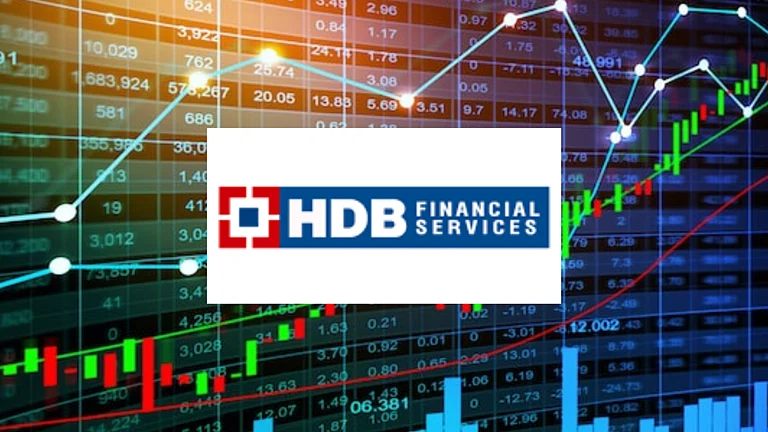IPO Watch: In the first six months of 2025, the primary market witnessed tepid action. Investors, too, were left high and dry after the 2024 IPO rush, in which nearly Rs 1.8 lakh crore was raised by companies from the primary market. The primary market was off to a robust start initially in 2025 as 27 public issues opened for bidding in January and 22 public issues opened for subscription in February. However, the number dwindled in the subsequent months as 14 IPOs opened in March and only five IPOs opened in the month of April.
IPO Watch: Public Issue Tsunami Strikes Primary Markets – Know What's Behind The Surge
IPO Rush: The May-June period also saw some of 2025's largest public issues opening for subscription, including HDB Financial Services IPO, Kalpatru IPO, Schloss Bangalore IPO
The IPO-drought occurred as the market traded flip-flop amid macroeconomic headwinds such as US President Donald Trump's reciprocal trade tariffs and geopolitical uncertainties such as the Pahalgam attack and the India-Pakistan conflict which followed. However, the trend seems to have reversed in the months of May and June as 20 companies tapped the primary market to raise funds via public issues, and 38 public issues are scheduled to open in June. Notably, the highest number of public issues has opened in June 2025 so far. The May-June period also saw some of 2025's largest public issues opening for subscription including HDB Financial Services IPO and Kalpatru IPO, Schloss Bangalore IPO which had an offer size of Rs 12,500 crore, Rs 1,590 crore and Rs 3,500 respectively. As of June 25, companies have raised Rs 34,772.93 crore via the primary market in 2025.
Why Have Companies Returned To The Primary Market
As the primary market experiences renewed interest from both companies and investors, here's a look at the key factors behind their return:
Resilience in the Secondary Market
Companies have returned to the primary market amid resilience in the secondary market after months of trading in a flip-flop manner. As of June 25 the market has factored in several macroeconomic headwinds such as the Indo-Pak conflict and the impact of US President Donald Trump's reciprocal tariff policy. The Sensex and Nifty traded at day-high levels of 82,814.9 and 25,266.8, respectively, on June 25. At the day-high, the Sensex is trading 3.67 per cent lower than its all-time high of 85,978.25, and the Nifty 50 is trading 3.84 per cent lower than its record high of 26,277.35.
Rising GDP Growth Rate
India's GDP growth has risen despite the macroeconomic headwinds. Ratings agency S&P also raised India's GDP growth forecast to 6.5 per cent for 2025-26 from its previous forecast of 6.3 per cent, assuming there's a normal monsoon, lower crude oil prices and monetary easing. Notably the GDP growth forecast for the next fiscal is 6.7 per cent and 7 per cent for 2027-28. Earlier the Reserve Bank of India also announced a GDP growth forecast of 6.5 per cent for FY2025-26 amid global uncertainties. Typically a rising GDP growth rate is an indicator of strengthening economy, which in turn can positively influence the primary market. A growing economy potentially leads to higher investor confidence and a increased demand for capital which can be channeled by the primary market.
Inflation Under Control
Inflation has largely remained under control in India even amid macroeconomic headwinds. As per the Ministry of Statistics and Programme Implementation (MOSPI) retail inflation has eased to 2.82 per cent year-on-year (YoY) in May 2025. On a month-on-month basis, inflation has eased by 34 basis points from 3.16 per cent in April 2025 as well. Notably, this is the lowest level at which retail inflation has been in the past six years. Easing inflation has also potentially served as a tailwind for the primary market and contributed to the return of companies.
Governmental Stability
On June 9 the, the Modi 3.0 government completed one year in power. Notably, this is Prime Minister Narendra Modi's third consecutive term which came to power in 2014. Thus India has largely witnessed political stability and stability at the policy level as well for slightly more than a decade. Typically political stability has a positive impact on the performance of the stock market while political instability has a negative impact.
Robust GST Collection
The Gross Goods and Services Tax (GST) collection for the month of May stood at Rs 2.01 lakh crore as per government data. Earlier in April GST collection touched a record high with revenues touching an all-time high of Rs 2.37 lakh crore. In May, gross revenues from domestic transactions grew 13.7 per cent to nearly Rs 1.5 lakh crore, while GST revenue from imports surged 25.2 per cent to Rs 51,266 crore.

